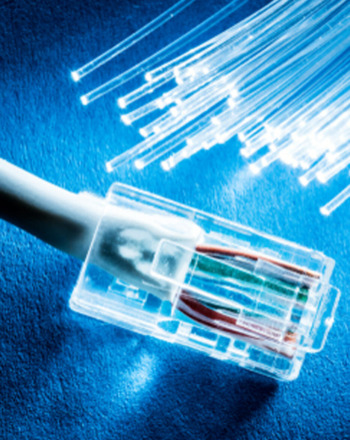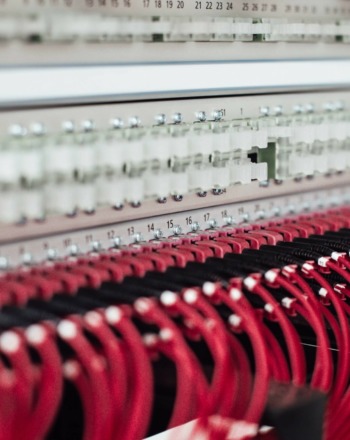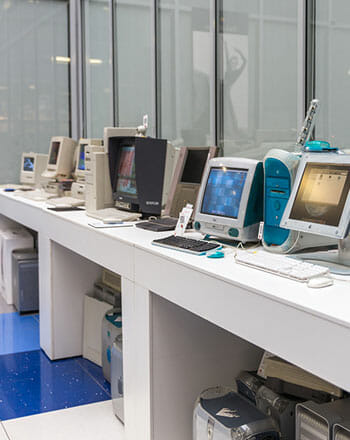A significant part of university life involves students finding their independence, but this can come with its fair share of stress. For many students, the combination of living by themselves for the first time and keeping up with study goals is a significant task in itself. Add a global pandemic to the equation and stress levels can understandably skyrocket.
When it comes to mental health, many universities have often been one step ahead of other governing bodies. However, they now need to look beyond helplines and workshops and explore how students are living - working to actively address their primary causes of stress. The difficulty of studying is a challenge in itself, but many students are also burdened with having to meet monthly financial responsibilities, working hard to budget finances in order to pay their bills on time, such as Wi-Fi, water and energy.
Importance Of Stress-Free Living
One of the common snags that have presented itself over the last year for students is a higher dependency on broadband connectivity. According to Ofcom, the average daily time spent online by UK adults grew from 3 hours and 29 minutes in September 2019 to 4 hours and 2 minutes in April 2020. The difference in internet activity pre-COVID-19 compared to only 2 years later is staggering.
Yet for many students, there remains a digital divide that places further tension on their university experience. One-third of young people do not have any internet access at all, and many more lack the quality of connection needed to work or learn from home. Access to sufficient, private and secure mobile or broadband data services is taken for granted. If a student cannot afford adequate access to data then they are increasingly excluded from opportunities, further increasing their stress, impacting their mental health and overall performance in their studies.
With constant assignments and exams, today’s students have to continuously stay on their game to achieve perfect grades, and this is only hampered further due to the connectivity issues introduced by the digital divide. In fact, research has found that Generation X is the most stressed-out generation in years. Issues of the digital divide are still very much a problem and are having a detrimental effect on students.
The UK Government is actively trying to minimise the digital divide, and Gigabit infrastructure within universities can play a prominent role in this. Internet speeds are able to scale and the opportunity for first-grade connectivity is at an all-time high. A full-fibre delivery that uses the latest network technology will provide a reliable and future-proofed service. For purpose-built student accommodation (PBSA), gigabit broadband means greater speed and productivity. With this in place, young people are given equal levels of Wi-Fi connectivity and access to the internet. However, universities must step up and use the rise in gigabit infrastructure to put in place new schemes that will provide a stress-free environment for their students.
Smart Campus Schemes
The answer is to utilise a smart campus ecosystem that meets the increased expectations of technology in education while providing long term sustainability and scalability. For many freshers living in student accommodation owned by universities, the universities can look to incorporate these buildings into various smart campus schemes.
The smart campus is defined as “a network-enabled environment with interconnected buildings across a campus or metropolitan area with every current and future service-connected and an ultra-fast connection for everyone.”
It exists to support constantly-evolving technology within university campuses and promote happier, healthier and safer students. Buildings should use automated processes to manage heating, ventilation, air conditioning, lighting, security and other systems to help deliver a first-class student experience. This will help to create a positive living environment for the students, decreasing stress and increasing productivity.
Only a few years ago, a smart campus may have sounded like something out of a dystopian future. Yet now with the rise in gigabit infrastructure, it is firmly within reach, and the pandemic has created the demand that should push universities to invest in it.
Expectations have changed when it comes to access to high bandwidth and seamless connectivity. Students need constant access to secure and reliable connections in communal areas, HMOs (house in multiple occupation), halls of residence or even Starbucks. While the smart campus is much more than broadband, a resilient, fast and scalable connection is the first step in deployment, and it all begins with laying fibre.
Fibre is capable of delivering next generation multi-gigabit connectivity across university campuses. Dark Fibre networks can be used to link university buildings and the broader estate, including student blocks and HMOs, through a long-term model that provides low fees.
A smart campus should hide complexity, leaving the simple benefits such as speed, interoperability and reliability so that whether you’re a student, lecturer or support staff, easy experiences are being achieved. Flexibility is crucial and the infrastructure should be scalable to support university growth whilst also capable of evolving to support new technologies without disruption to students. Ultimately, a smart campus should look beyond standard smart-device deployment, such as lighting, energy management, HVAC & security, and be the foundation for achieving world-class sustainability to benefit students.
Ultimately, demand for internet connectivity, higher speeds and greater capacity have increased year-on-year. As more services are run over one network, universities have quickly found themselves running out of bandwidth. While this has the potential to become a significant problem for universities, Wilson explains that the issue wouldn’t exist in a smart campus.
With that in mind, universities need to sync up their entire network - not only the university campus itself but also purpose-built student accommodation (PBSAs), HMOs, student union buildings, libraries and everywhere in between. Smart campus infrastructure doesn’t only provide a reliable solution to short-term connectivity issues and the digital divide, but it also offers long-term scalability that can continuously be tweaked, upgraded and expanded to fit the institution’s needs as they shift.
The smart campus is the future of higher education and the solution to how universities can facilitate stress-free living for students.


















































































































